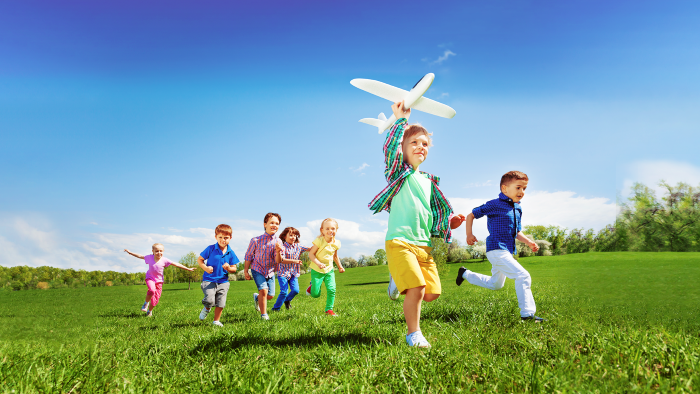nCa Report
In the quiet spaces between conflict and calm, children’s minds are developing, forming neural pathways that will guide them through life. The relationship between peace and children’s mental health is not merely theoretical—it is a living reality that shapes our collective future. When we look beyond the immediate headlines of conflict zones to understand deeper societal implications, we find compelling evidence that sustainable peace creates the necessary foundation for children to develop healthy, resilient minds.
Consider the child growing up in a region affected by ongoing conflict. Research by the World Health Organization (WHO) and UNICEF has consistently documented that exposure to violence and instability creates profound impacts on developing brains. According to the WHO’s 2016 report on violence prevention, children in conflict zones experience heightened stress responses that can interfere with normal brain development, affecting areas responsible for learning, emotional regulation, and social connection.
The evidence supporting this connection is substantial and growing. A 2018 systematic review published in The Lancet by Charlson et al. found that people living in conflict-affected areas have significantly elevated rates of mental disorders, with meta-analyses showing that exposure to conflict nearly doubles the prevalence of mental health conditions including depression, anxiety, and post-traumatic stress disorder.
The intergenerational effects of conflict are also well-documented. Research from the Harvard Center on the Developing Child has demonstrated that parental trauma and toxic stress can impact parenting capacity and create vulnerability in children. Their studies show that while genetics play a role, the quality of caregiving environments—which are severely compromised during conflict—has profound effects on children’s developmental trajectories.
The UN High Commissioner for Refugees (UNHCR) has documented that displaced children face particular mental health challenges. Their 2019 global report on refugee education notes that refugee children are five times more likely to be out of school than non-refugee children, with resulting impacts on their psychological development and future prospects.
Beyond statistical evidence lies the lived experience of children themselves. UNICEF’s 2020 report “The State of the World’s Children” included testimonials from children in conflict zones that powerfully illustrate how violence restricts their psychological horizons. As one 10-year-old from Syria explained: “When there is fighting, I can only think about today. When it’s peaceful, I can dream about tomorrow.”
Developmental psychologists have long recognized that secure attachment—the emotional bond between children and caregivers—forms the foundation for all subsequent psychological growth. The Adverse Childhood Experiences (ACE) study, conducted by the U.S. Centers for Disease Control and Prevention in collaboration with Kaiser Permanente, demonstrated that childhood exposure to various forms of adversity, including community violence, correlates strongly with negative health outcomes across the lifespan.
Peace doesn’t merely prevent trauma—it actively cultivates resilience. The work of Dr. Ann Masten at the University of Minnesota on resilience in children facing adversity has shown that stable, supportive environments provide protective factors that help children develop adaptive coping skills. Her research identifies how “ordinary magic”—normal developmental processes—can resume when basic security is restored.
Education outcomes provide perhaps the most visible evidence of this connection. Education Under Attack 2020 report documented over 11,000 attacks on education facilities, students, and educators between 2015 and 2019. These disruptions affect not just academic learning but the development of social-emotional skills that form the foundation of mental health. Research by the Global Coalition to Protect Education from Attack shows that schools provide crucial psychological support and normality during crises when they remain safe spaces.
Economic analyses further strengthen the case for prioritizing peace as a mental health intervention. The World Bank and WHO’s joint report “Out of the Shadows: Making Mental Health a Global Development Priority” (2016) estimated that mental health conditions will cost the global economy approximately $16 trillion between 2010 and 2030, with conflict zones generating disproportionately high percentages of these costs.
The voices of mental health professionals working directly in conflict zones add particular weight to these arguments. Organizations like Médecins Sans Frontières (Doctors Without Borders) have documented the psychological symptoms commonly seen in children from conflict regions, including hypervigilance, emotional numbness, and foreshortened sense of future. Their field reports describe how sustainable peace creates the conditions necessary for effective mental health interventions.
Evidence from post-conflict regions provides hope. Research by the Peace Research Institute Oslo has documented gradual improvements in population mental health indicators following successful peace processes in several regions. Their longitudinal studies show that psychological recovery takes time but accelerates when peace is accompanied by inclusive social policies and community-based supports.
The implications for policy are profound. If peace is indeed a prerequisite for optimal child mental health, then peacebuilding becomes not just a political or security concern but a critical public health intervention. The World Health Organization’s Mental Health Action Plan explicitly recognizes the need to address the social determinants of mental health, including exposure to violence and conflict.
The evidence converges toward an inescapable conclusion: peace is not a luxury or an idealistic goal—it is a fundamental requirement for children’s healthy psychological development. As we face increasing global challenges that threaten stability in many regions, protecting children’s mental health offers perhaps the most compelling case for prioritizing peace. Each child born into a peaceful society represents not just an individual spared from trauma, but a crucial investment in our collective future mental wellness.
As the UN Convention on the Rights of the Child affirms in its preamble, children should “grow up in a family environment, in an atmosphere of happiness, love and understanding.” Modern science now confirms this insight—the minds we help form today will create the peace of tomorrow. In this profound interconnection between children’s mental health and sustainable peace lies our greatest challenge and our greatest hope./// nCa, 14 April 2025 (in interactive mode with AI)
